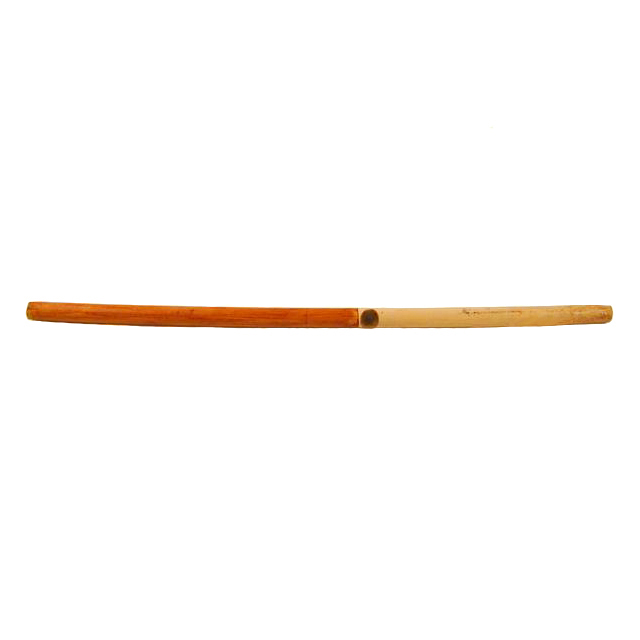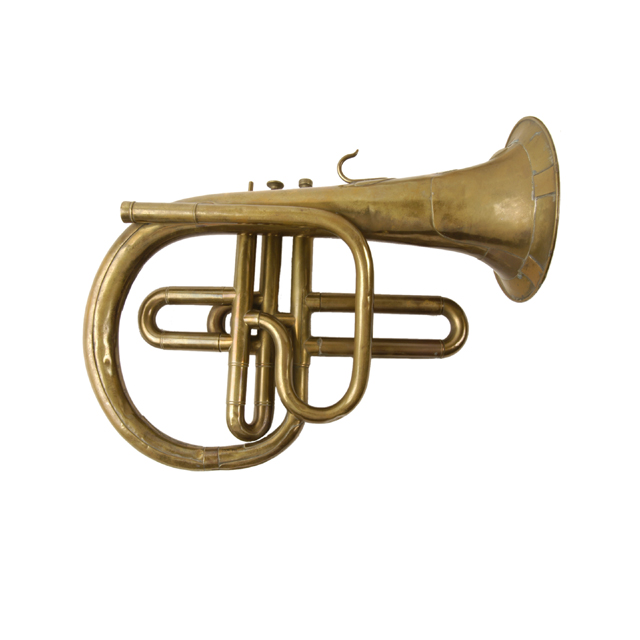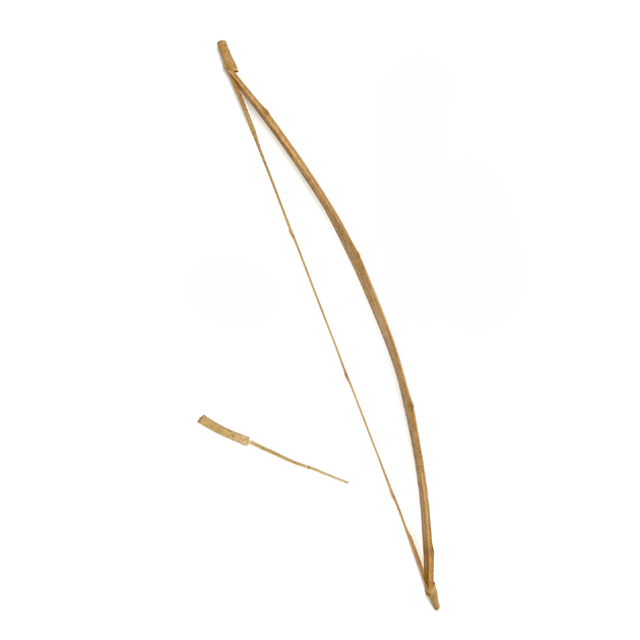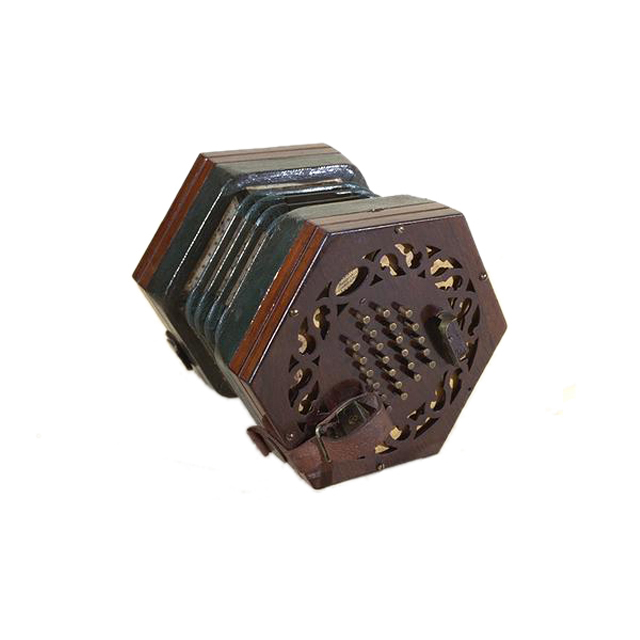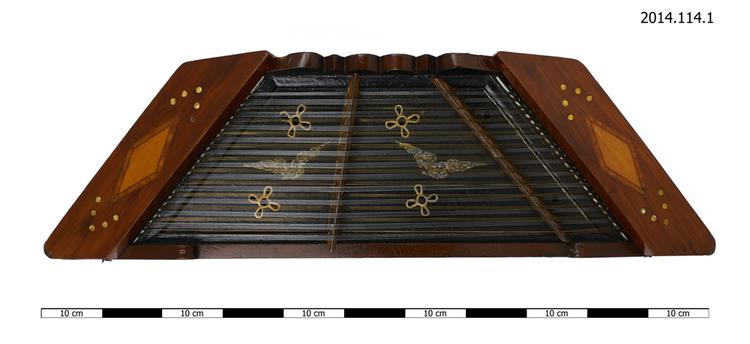
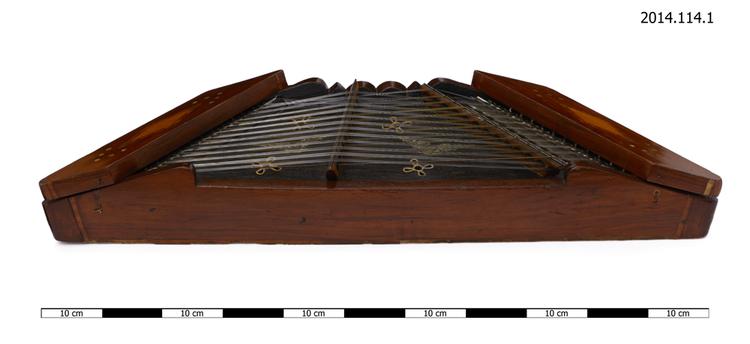
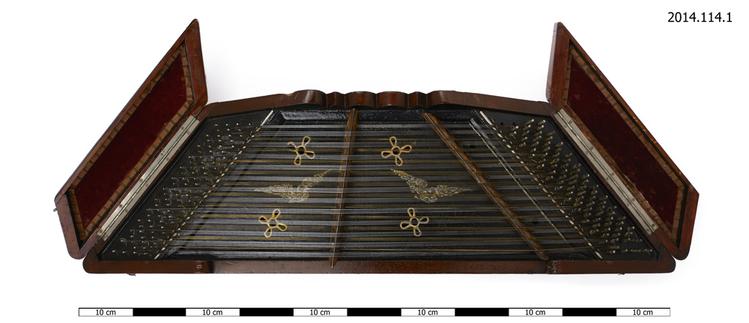
One dulcimer made in Birmingham, (probably Smallheath), circa 1900. This trapezoid instrument is made of wood covered with veneer. The hitch pins and wrest pins are concealed by two hinged lids, each decorated with inlaid wood in a design of a lozenge surrounded by discs of mother of pearl. The table is painted black with 4 soundholes outlined in white, and a design of two birds. There is a hole in the underside of the instrument for a pole to support it at the requisite angle for playing. The instrument is strung with 12 courses of treble and 12 courses of bass strings: 12 quadruple courses of steel treble strings, 10 triple courses of brass bass strings; 1 triple course of bass steel strings that is the highest course of bass strings, and a single wire-wound string that is the lowest note of the bass strings. To the left of each course of tuning pins is a comb of small pins to keep all the strings in each course separate. The holes in the bridges were burned out with a red hot poker. Parts of the instrument were re-silvered by the owner, Leslie John Evans.
The dulcimer belonged to Leslie John Evans born 19 March 1909, died 1975. He acquired the dulcimer when he was living in Smallheath, Birmingham, in 1925, as a prize for winning a challenge. Mr Evans was a sugar boiler at Moseley’s in Marston Green Birmingham from around 1925. From around 1945 he and his wife were caretakers at Saltley School in Birmingham, and from 1953 they were caretakers at Kingstanding school, Birmingham, where he stayed until he died. Mr Evans started playing the dulcimer with hammers but soon changed to plucking the instrument using sewing needles with the tops cut off, moving on to plectra at the request of the BBC before he made a broadcast programme. He always played by ear, never learning to read music. He was adept at playing popular tunes, and could play anything that was requested. His daughter, Pauline Ravenscroft, remembers him playing ‘Blue Bells of Scotland’, ‘My Grandfather’s Clock’ and ‘Church Bells’ (i.e. ‘I love to hear the pealing bells’). He became known as a dulcimer player in the Birmingham area, playing in the Variety Artists club, working men’s clubs and cinemas, and he gave two BBC radio broadcasts. He played for entertainments in church halls, notably that of his own church, the Kingstanding Baptist Church (John Bunyan Baptist), and for the Salvation Army. From around 1945 to around the 1960s he would give concerts with Madame Elizabeth Rowcott, a pianist and singer with whom he alternated in performance. He sometimes played for school assemblies on the dulcimer at Kingstanding School. He played to entertain his own family. He did not play to accompany dancing or singing. He also played the autoharp, piano and (church) organ. For a full account of L. J. Evans’ repertoire and playing style see David Kettlewell’s doctoral thesis ‘The Dulcimer’ (1976) http://dulcimer.new-renaissance.com/4_british_isles/04_midlands_and_north/



